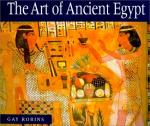|
This section contains 855 words (approx. 3 pages at 300 words per page) |

|
Similarities to Art. Maps preserved from ancient Egypt attest to the ancient interest in recording and interpreting the world. Egyptian maps described topography, architecture, the mythological world, and the whole cosmos. The scholar James A. Harrell has isolated three characteristics of these maps that associate them with the conventions of Egyptian art in general; for example, making a picture of a space rather than an actual plan. One map also can combine a bird's-eye view with profiles and plan-views simultaneously. Thus, a map resembles in concept an Egyptian rendering of a human body. It also shows multiple perspectives within one drawing, such as a whole eye within a profiled face. Finally, scale was not recorded in the drawing but rather through written annotations. A note added to the map tells the actual distance between two places. This connection between importance and size of...
|
This section contains 855 words (approx. 3 pages at 300 words per page) |

|




